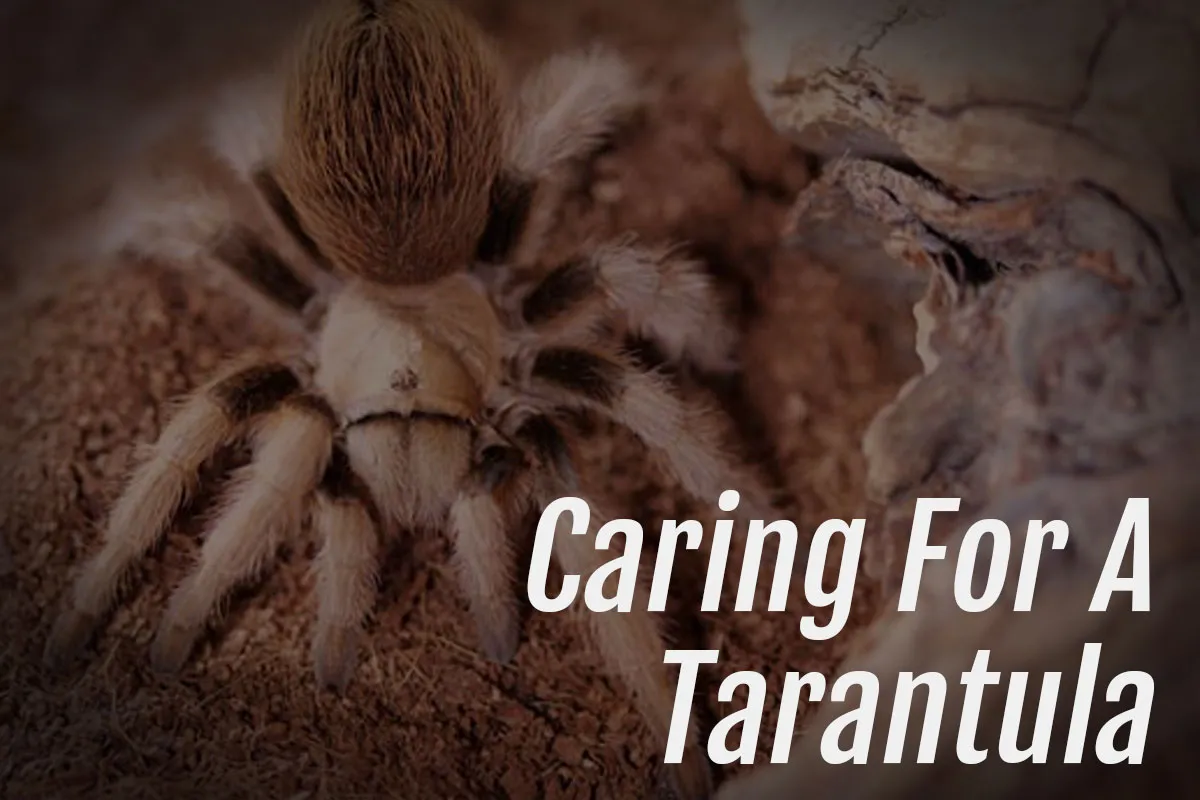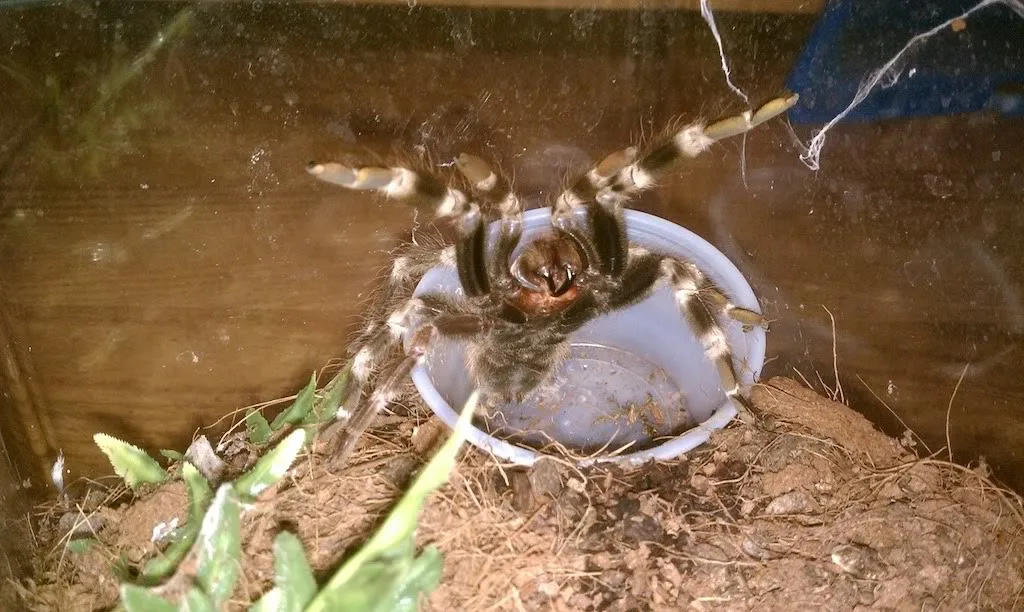Keeping a tarantula can be a rewarding experience, offering a unique perspective on the fascinating world of arachnids. These creatures, with their diverse colors and behaviors, make captivating pets for those who appreciate the less conventional. However, successful tarantula care requires understanding their specific needs. This expert guide provides comprehensive information to help you keep a tarantula, ensuring your pet thrives in a safe and enriching environment. From selecting the right species to understanding their habitat and diet, we will explore all the critical aspects of tarantula care.
Choosing the Right Tarantula
The journey of keeping a tarantula starts with selecting the right species. Not all tarantulas are created equal, and some are better suited for beginners than others. Researching different species is crucial, as their temperaments, care requirements, and sizes vary widely. Considering your lifestyle and experience level is essential before bringing a tarantula into your home. A well-informed choice will set the foundation for a successful and enjoyable experience.
Beginner-Friendly Tarantula Species
Several tarantula species are known for their docile nature and relatively straightforward care requirements, making them ideal for beginners. The Chilean Rose Hair (Grammostola rosea) is often recommended due to its calm temperament and tolerance for minor care mistakes. The Mexican Red Knee (Brachypelma hamorii), though slightly more demanding in terms of humidity, is also a popular choice. Other good options include the Pinktoe Tarantulas (Avicularia genus), known for their arboreal lifestyle and vibrant colors. When choosing a species, always check the availability and legality of keeping it in your area.
Considerations Before Getting a Tarantula

Before welcoming a tarantula into your home, several factors must be considered. Ensure you have the necessary space, resources, and commitment to provide proper care. Tarantulas can live for many years, so this is a long-term commitment. Research the specific needs of your chosen species, including their required enclosure size, temperature, humidity, and diet. Consider the potential cost of supplies, food, and any necessary veterinary care. Finally, ensure all members of your household are comfortable with having a tarantula and are aware of safety precautions.
Creating the Perfect Tarantula Habitat
The habitat is a tarantula’s home, and a well-designed enclosure is crucial for its health and well-being. The setup must replicate the natural environment of the tarantula, providing a safe, comfortable, and stimulating space. The enclosure should be large enough for the tarantula to move around, with appropriate substrate, hiding places, and environmental controls to regulate temperature and humidity. A properly designed habitat will not only keep the tarantula healthy but also allow you to observe its natural behaviors.
Enclosure Size and Type
The size and type of enclosure depend on the tarantula species and its size. Generally, terrestrial tarantulas require more floor space, while arboreal species need height. A good rule of thumb is to provide an enclosure that is at least twice the tarantula’s leg span in width and length. Glass or acrylic terrariums are common choices, with secure lids to prevent escape. Ensure adequate ventilation to prevent mold and maintain air quality. Avoid enclosures with sticky surfaces or sharp edges, which could harm the tarantula.
Substrate Selection

The substrate is the material at the bottom of the enclosure, and it serves multiple purposes, including providing a comfortable surface, absorbing waste, and helping to maintain humidity. The choice of substrate depends on the tarantula species and its specific needs. For most terrestrial species, a mix of coco fiber, peat moss, and vermiculite is suitable. This combination holds moisture well, allows for burrowing, and is relatively easy to clean. Arboreal species may prefer a substrate mix that includes more sphagnum moss and cork bark to provide climbing surfaces and retain humidity. Avoid using substrates that are toxic or contain harmful chemicals.
Temperature and Humidity Control
Maintaining the correct temperature and humidity levels is vital for a tarantula’s health. Most tarantulas thrive in temperatures between 75-85°F (24-29°C). A heat source, such as a heat mat or ceramic heat emitter, may be necessary to maintain the desired temperature, especially during colder months. The humidity level also varies by species. Use a hygrometer to monitor humidity levels and adjust them as needed. Misting the enclosure with water or providing a water dish are common methods to increase humidity. Proper ventilation is equally important to prevent the buildup of condensation and mold.
Feeding Your Tarantula
Feeding is a critical aspect of tarantula care. Providing a balanced diet ensures your tarantula receives the necessary nutrients to thrive. The types of food, feeding frequency, and water access all play a role in keeping your pet healthy and active. The following guidance will give you the knowledge and tools to feed your tarantula correctly.
What Tarantulas Eat

Tarantulas are primarily insectivores, and their diet should consist mainly of insects. Crickets, mealworms, and dubia roaches are popular choices because they are readily available and provide essential nutrients. The size of the prey should be appropriate for the tarantula’s size; generally, the prey should be no larger than the tarantula’s body. Avoid feeding wild-caught insects, as they may carry parasites or pesticides that could harm your tarantula. Variety in the diet is crucial, so consider offering different types of insects to ensure a balanced intake of nutrients.
Feeding Frequency
The feeding frequency depends on the tarantula’s age, species, and metabolism. Juvenile tarantulas often need to be fed more frequently than adults. As a general guideline, juveniles can be fed two to three times per week, while adults may only need to be fed once or twice a week. Observe your tarantula’s abdomen to assess its condition; a well-fed tarantula will have a plump abdomen. Avoid overfeeding, as this can lead to health problems. Remove any uneaten prey within 24 hours to prevent stress and potential harm to the tarantula.
Watering Your Tarantula
Providing access to fresh water is essential for tarantula health. Always provide a shallow water dish, preferably one that is difficult to tip over. The water should be changed regularly, at least twice a week, to maintain cleanliness. For some species, especially those that prefer higher humidity, misting the enclosure with water may be necessary to maintain humidity levels. Observe your tarantula’s behavior to ensure it has adequate access to water and adjust your watering schedule as needed.
Handling and Safety

While some tarantula species are relatively docile, it is important to approach handling with caution and respect. Tarantulas can be easily stressed, and improper handling can lead to bites. Understanding tarantula behavior and taking the appropriate safety measures are crucial for both your well-being and the tarantula’s. This section gives you an overview of the important things to know to interact with your pet safely.
Safe Handling Techniques
Handling tarantulas should be minimized, as it can stress them. If handling is necessary, do so with extreme care. Avoid sudden movements and be mindful of the tarantula’s behavior. Always handle a tarantula close to the ground to prevent injuries from falls. Some people use a soft brush or other tool to gently coax the tarantula onto their hand. Never force the tarantula to move; let it crawl on its own terms. Always wash your hands thoroughly before and after handling, and supervise children closely.
Understanding Tarantula Behavior
Understanding tarantula behavior is crucial for safe handling. Tarantulas may exhibit various behaviors, such as flicking hairs (urticating hairs), raising their front legs in a defensive posture, or attempting to flee. Recognizing these signs of stress is essential to avoid being bitten. If a tarantula displays defensive behavior, it is best to leave it alone. Take your time, and observe your tarantula closely to determine what makes them comfortable and what stresses them. A calm and relaxed tarantula is less likely to be defensive.
Common Health Issues and Care

Like all living creatures, tarantulas can experience health problems. Recognizing common health issues, such as parasites, and providing appropriate care is essential for maintaining a healthy tarantula. Regular observation and monitoring will help you identify potential problems early on. Here is an overview of important issues to watch out for to keep your tarantula happy.
Recognizing Signs of Illness
Several signs can indicate that a tarantula is ill. These include loss of appetite, lethargy, changes in behavior, and unusual posture. Other signs can include fluid leaking from the mouth, tremors, or difficulty walking. If you observe any of these signs, it is essential to isolate the tarantula and consult an experienced tarantula keeper or a veterinarian with expertise in exotic animals. Providing the proper care and treatment can improve your pet’s chances of recovery.
Moulting Process
Moulting is a natural process in which tarantulas shed their exoskeletons to grow. During the moult, the tarantula will typically stop eating and may spend a lot of time on its back. This can be stressful. Ensure that the enclosure is kept clean and the environment is humid, especially during this time. Do not disturb the tarantula while it is moulting or shortly after it has completed the process, as its new exoskeleton will be soft and vulnerable. After moulting, the tarantula may have a bigger appetite than usual, so offer plenty of food.
Tarantula Lifespan

Understanding the tarantula’s lifespan is an important consideration for potential owners. The lifespan of a tarantula can vary significantly depending on the species and sex. Female tarantulas typically live much longer than males, often exceeding 20 years. Male tarantulas, on the other hand, may only live for a few years after reaching maturity. Knowing the lifespan of your tarantula can help you prepare for the long-term commitment of owning these fascinating creatures. Regular care and proper handling are keys to maximize your pet’s lifespan.
Keeping a tarantula is a fulfilling endeavor that requires careful planning, research, and ongoing dedication. By following the guidelines in this expert guide, you can create a healthy, safe, and enriching environment for your tarantula. Remember to always prioritize the tarantula’s well-being, and enjoy the fascinating experience of owning these amazing creatures. With proper care, your tarantula will thrive, providing you with years of wonder and enjoyment.
